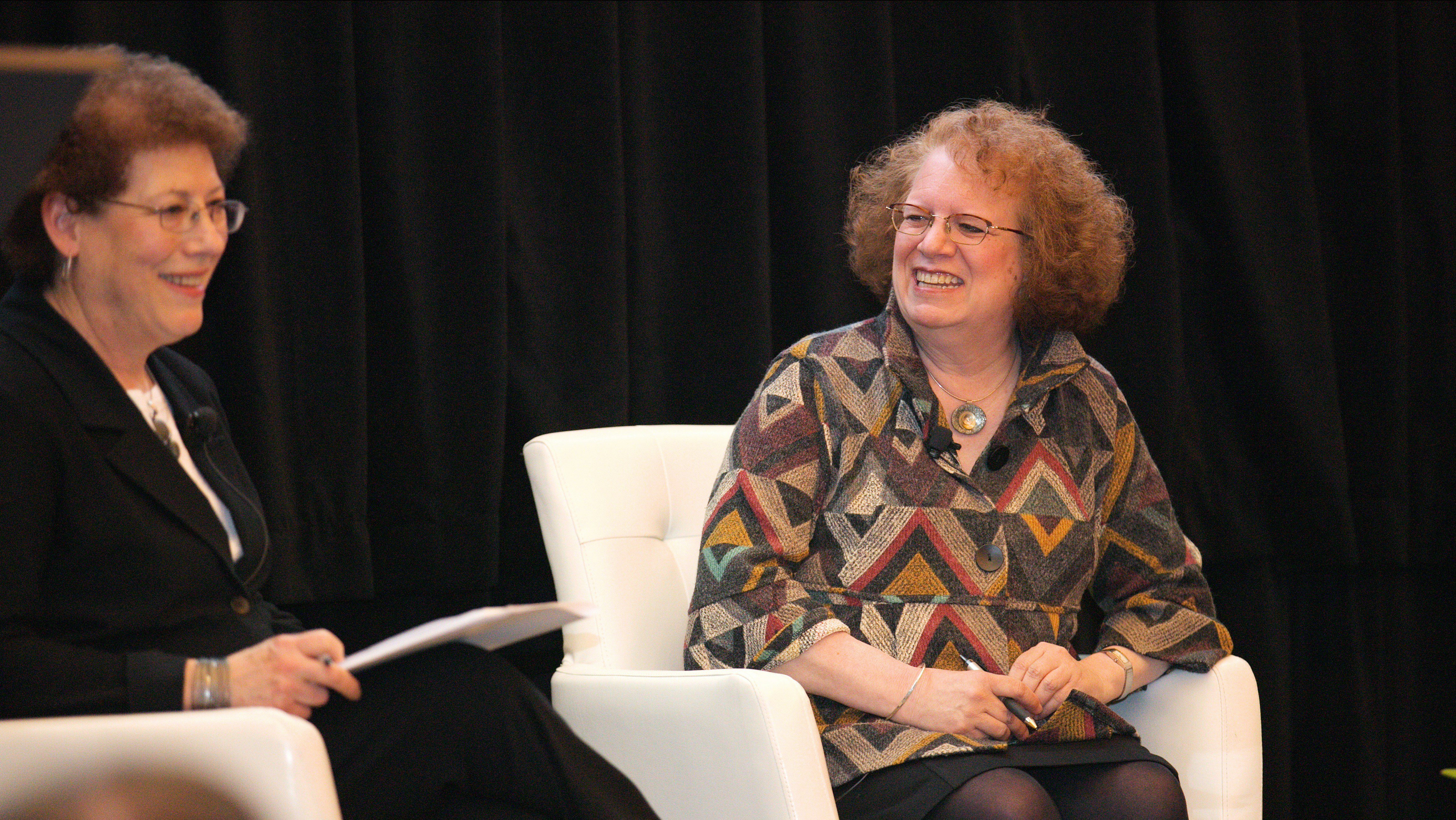When Jobs Disappear

Alumnae/i and friends gathered at the W Hotel–Union Square in Manhattan to discuss what happens when jobs disappear.
April 17, 2018
Amy Goldstein RI ’12—who has been a staff writer at the Washington Post for the past 30 years—observed people falling out of the middle class during the Great Recession of 2007–2008. These people were “shell-shocked to find themselves there,” she said. It seemed to Goldstein that something profound was happening. “We were a country of up, not down, and suddenly there was a fair amount of down,” she told the capacity crowd in the Great Room of the W Hotel during an event cosponsored by the Harvard Alumni Association.
Goldstein realized that she hadn’t seen much writing about what it means to individuals and communities to lose work, so she took time off from her day job to find a community to write about. The result was Janesville: An American Story (Simon & Schuster, 2017), about a midwestern community that struggled to find a way for-ward after the General Motors plant that had operated there for 80 years closed in 2008.
Another Radcliffe fellow, Ruth Milkman RI ’13—a distinguished professor of sociology at the Graduate Center of the City University of New York and a distinguished professor of labor studies and director of research at the Joseph S. Murphy Institute for Worker Education and Labor Studies—joined Goldstein at the New York event to discuss the consequences of losing a job. Lizabeth Cohen, then dean of the Radcliffe Institute and the Howard Mumford Jones Professor of American Studies at Harvard, moderated a discussion between the two fellows. Goldstein was the 2011–2012 Katherine Hampson Bessell Fellow at Radcliffe, and Milkman was the 2012–2013 Matina S. Horner Distinguished Visiting Professor. Milkman pointed out that many people who lose their jobs after age 45 re-enter the workforce doing nonstandard work: a contract job for a little while and part-time rather than full-time work. “These are the people you see working in Home Depot, maybe not here in New York, but in most of America,” she said. She added that pensions are disappearing for many people who work outside the public sector, which will make the plight of older workers more pronounced in years to come.
Cohen raised the question of retraining. “We hear about how a miner can become something else,” she said, “and an oil worker can take on a job in a hospital or another area of our economy that’s doing well.”
Retraining, Goldstein said, was one of the reasons she chose to study Janesville: in the years after the jobs went away, it had the largest enrollment increase in Wisconsin’s college system. However, only a third of people who started retraining finished, “and that’s pretty typical of community college completion rates nationally,” she said. Nevertheless, through the years, Janesville was resilient, Goldstein said, with a long tradition of building its own economy. The Parker Pen Company originated there, and, early in the 20th century, so did the tractor factory that was later bought by General Motors. But after the Great Recession, the businesses that came in—including a distribution center for Dollar General—didn’t offer good jobs.
Before the conversation opened up to audience questions, Milkman made a point about where she thinks the anger about job loss should be directed. “What really makes me sad,” she said, “is the way in which the very justifiable anger and resentment that working-class Americans feel today is being directed at immigrants and to some extent at people of color more generally, instead of where it should be directed, which is at economic forces and employers who have restructured work in such a way as to make good jobs so hard to find.”







